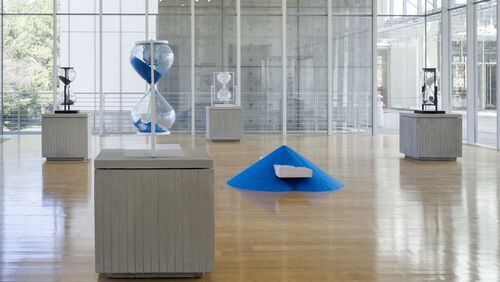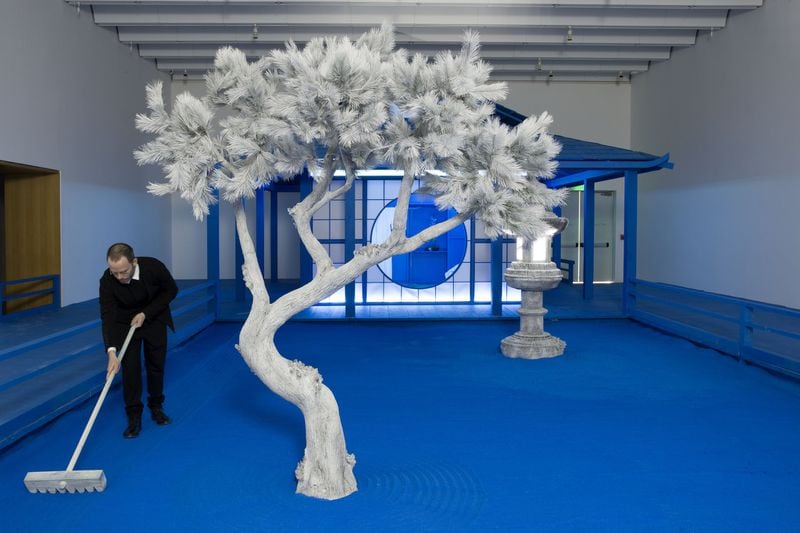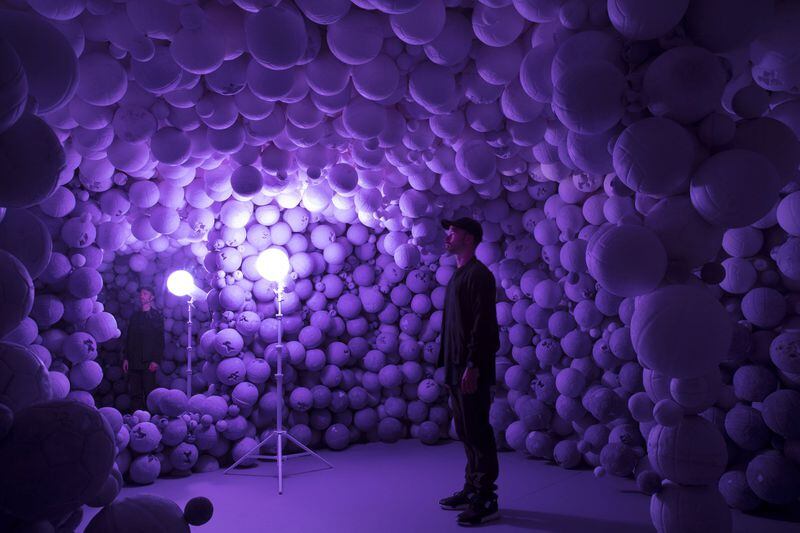It would be hard to miss the High Museum of Art’s newfound voice and vision. For whatever reasons — a change of directors, or of curators or simply an institution trying to align itself with a more diverse, millennial, exploratory city population — there are signs everywhere that the museum has abandoned its blockbuster-du-jour habit and invited audiences into a new way of experiencing art.
The most recent example of that sea change is New York City-based artist Daniel Arsham's ambitious installation work "Hourglass," on view on two levels of the Anne Cox Chambers wing.
An artist known for his collaborations with luxury brands and A-list celebrities like Usher and Pharrell Williams, Arsham has also created theatrical sets for the ballet, opera and symphony. His work includes scenography for two Atlanta Symphony Orchestra productions this season: Christopher Theofanidis’ “Creation/Creator” (which was performed in late March) and Christoph Willibald Gluck’s “Orfeo” (coming in May).
At the High, Arsham has created a melancholy, poetic meditation on time and on our shared past; his concern is the fleeting nature of all of our lives. “Daniel Arsham: Hourglass” is part of a larger interest in what the artist calls “fictional archaeology” in which contemporary objects made to look like archaeological relics invite contemplation of our mortality. At its core, “Hourglass” is like that eponymous time-keeper, reminding us that our days are numbered.
At the heart of “Hourglass” are cast replicas of real things to which the artist adds precious and semiprecious crystals that seem to grow like mold within his sculpture’s cavities. His work suggests ordinary objects — human hands and faces, cameras, trees, keyboards — calcified into stone with time’s passage.
Arsham’s work appears in collaboration with local dance group Glo, whose dancers interact with two of Arsham’s installations, “Hourglass” and a large-scale Japanese “Zen Garden” installation, on Sundays throughout the duration of the show. (There are three different installations within the “Daniel Arsham: Hourglass” show.)
On the ground floor of the Anne Cox Chambers wing, a young girl weaves through the selection of four oversized hourglasses on display, at times turning them to uncover objects buried in the sand. Encased within these large hourglasses are relics of human presence: hands clasped in a gesture of prayer, cameras, a woman’s face. As the sand falls, an object is uncovered or slowly disappears, a gesture with obvious allusions to death and the grave. But there is also the sense of these things we know as our culture, disappearing, perhaps to be uncovered by some future civilization. These objects encased in glass have a presence that is both sublime and spooky, reminiscent of ancient objects in a historical museum.
That same metaphysical strain continues on the building’s second floor, where Arsham has taken over the entire gallery, installing an elaborate tea house painted an intense Yves Klein blue and bordered by a Zen garden of carefully raked, sparkling blue sand and a crystal tree.
Within that dreamy, fantastic tea house, a seated figure and a movie camera suggest a moment frozen in time. Another Glo dancer — an older man with a neatly trimmed white beard and kimono — sits in contemplation in the tea house, then rises to rake the sand in the garden. He is an animating presence, turning a set piece into theater.
Sharing that second-floor gallery space with the Japanese garden is “Amethyst Sports Ball Cavern,” the least effective piece in Arsham’s three-prong show. Visitors can wind through the narrow passageway in the installation, until they reach a kind of chamber forged from cast basket, volley and soccer balls and amethyst, quartz and hydrostone stacked up like skulls in the catacombs.
ART REVIEW
“Daniel Arsham: Hourglass”
Through May 21. 10 a.m.-5 p.m. Tuesdays-Thursdays and Saturdays; 10 a.m.-9 p.m. Fridays; noon-5 p.m. Sundays. $14.50, ages 6 and above; free for children 5 and younger and members. High Museum of Art, 1280 Peachtree St. N.E., Atlanta. 404-733-4444, www.high.org.
Bottom line: Thoughtful meditations on mortality define this noted artist's provocative installations.
About the Author








